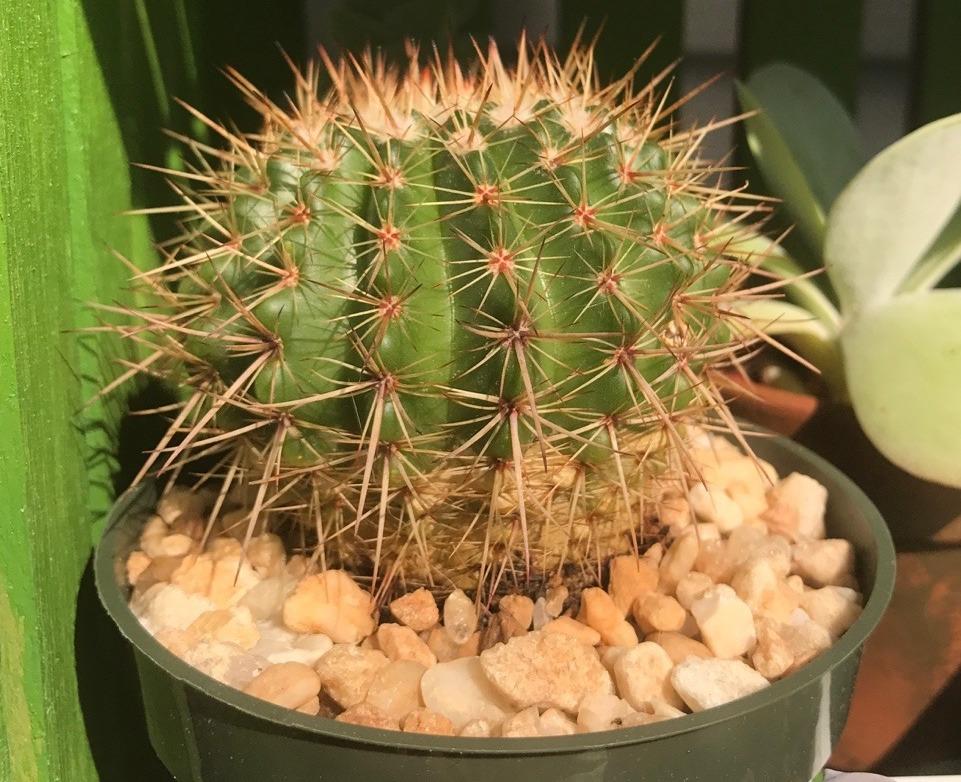Cacti, known for their resilience, can sometimes fall victim to rot. Whether it’s due to overwatering, high humidity, wounds, or insect infestations, rot is a common issue that requires immediate attention. Rot, caused by fungal or bacterial diseases, can damage any part of the plant, from the roots to the tip. Crown rot, especially, is prevalent, starting at the base where the stem meets the soil. Look for signs of soggy black or brown tissue, sunken appearance, and pale green or yellow growth. Detecting root rot can be challenging as it occurs underground, often revealing itself when the top of the plant starts to yellow and wilt.

This isn’t rot; it’s just the natural corky growth that appears on many older cacti. Photo: los-plantalones.tumblr.com
But fear not! With the right techniques and a little care, you can save your rotting cactus. Let’s dive into the process of cactus surgery and revive your beloved plant.
Sterile Tools
Just as sterility is crucial in an operating room, it is equally important in cactus surgery. Make sure your cutting tools, such as knives, pruning shears, and saws for thick stems, are sterilized. Before and after each cut, wipe them down with rubbing alcohol.

Sterilize the blade between each cut with rubbing alcohol. Photo: rwadamslaw.info
Treating Stem Rot
When rot occurs aboveground, whether near the tip or in the middle of the stem, the simplest solution is to cut off and discard the affected part using a sharp knife or pruning shears. Examine the lower part of the stem to ensure there is no sign of rot, such as dark, spreading tissue or orange discoloration. If any signs of rot are present, continue cutting lower until you reach healthy tissue. Applying powdered sulfur to the wound is advisable, although it is not as vital as for root or crown rot.

With its rotting tip removed down to healthy growth, this cactus will be able to sprout a new top. Photo: Green Lady, www.youtube.com
Over time, a callus will form where you made the cut, and new stems will emerge just below it. You can choose to keep one stem or allow multiple stems to grow. With the right growing conditions, your cactus will fully recover.
Dealing with Root or Crown Rot
When roots or the base of the stem show signs of rot, more drastic measures are necessary. You’ll need to decapitate the plant and propagate the healthy top. This method only works if the top section is still green and healthy. If it’s already yellowing or becoming soft, it’s time to hold a small cactus funeral and replace it with a new one.
Carefully cut off the top of the plant, above the infected area, and discard the bottom part. If you plan to reuse the pot, make sure to clean it thoroughly to eliminate any disease spores. Examine the wound to ensure that the tissue is healthy. If you spot even the slightest tinge of brown or orange, make another cut, slicing off another section until you reach healthy tissue.

If the first cut shows signs of rot, slice off another section. Photo: www.kuentz.com
To prevent further infection, apply sulfur powder to the wound as a natural fungicide. Allow the cutting to callus over, which can take anywhere from a week to several months, depending on the thickness of the stem. If the callusing process is lengthy, the stem tip may start to grow upwards, affecting the cutting’s future symmetry. To counter this, rotate the stem a quarter turn each week or stand the cutting upright.
Once the callus is dry and hard, transfer the cutting to dry potting soil, preferably a cactus mix. Do not water immediately! Allow a few weeks for the roots to begin forming before lightly watering. When you start to see healthy new growth, you can resume regular watering.
Clumping Cactus
In clumping cacti, treating rot can be as simple as removing the diseased stems. However, if root or crown rot affects one side of the plant, division may be the best solution. Gently remove the plant from its pot and separate the healthy stems. If the stems already have roots, simply pot them up and wait a week or two before watering. If the stems are not yet rooted, treat them as cuttings. Clean them off, allow them to dry in the air for a few weeks, and then pot them up. As with previous methods, avoid watering the cuttings initially and gradually introduce water once new growth appears.
So, don’t lose hope! With the right techniques and a little bit of care, you can save your rotting cactus and restore it to its former glory!
Note: This article is for informational purposes only and should not replace professional advice.

